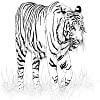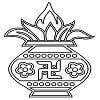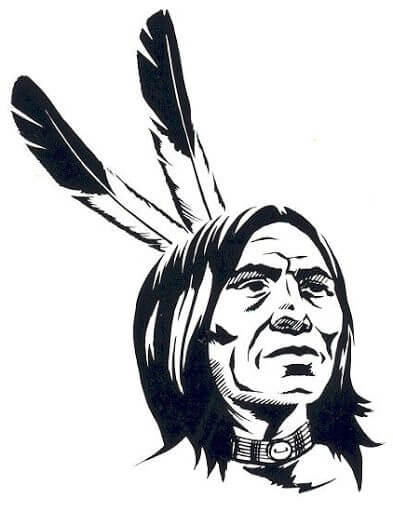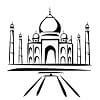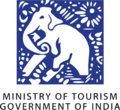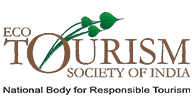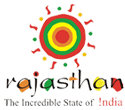- Home
- Holiday Ideas
-
-
- Choose Your Traveling Theme
-
- Adventure Tourism
-
- Cultural Tourism
-
- Tour Packages
-
-
- Packages by State
-
- Holidays by Interest
-
- Popular Tour Packages
-
- Fair And Festivals
-
- Ayurveda And Yoga
-
- Offers
-
- Destinations
-
Tourist attractions in Ladakh
The heritage of Leh and Ladakh through its attractions
Tourist attractions in Ladakh
Set in a heavenly landscape, surrounded by the snow-capped peaks of the Himalayas, Zanskar and Karakoram ranges, bordered by the crystal clear waters of the Shyok, Zanskar, and Indus rivers, Ladakh is one of the coldest deserts in the world. Perched at a height of over 11,000 feet above sea level, it is a paradise for adventure sports enthusiasts. Its rugged terrain and gushing rivers offer many opportunities for activities such as trekking, rafting, camping, climbing, and biking. As the winter months approach, the Union Territory is enveloped in a blanket of snow, making it a winter sports paradise. The famous Chadar Trek starts from the village of Chilling, 66 km away, and covers mainly the frozen area of the Zanskar River. Along the way, trekkers walk on precarious icy surfaces, stay in caves filled with stalactites and stalagmites and encounter other snowy landscapes.
...Ladakh has three beautiful high-altitude lakes, Tso Moriri, Tso Kar, and Pangong Tso, which look like sapphires embedded in the ground. Magnetic Hill is a natural wonder that leaves tourists in awe. It is said to defy gravity as it tends to pull vehicles upwards. Ladakh is an important center of Buddhism and has several important monasteries. Tourists can walk the monastery trail and see the ancient cultures of the region come alive in the various paintings that adorn the walls while engaging in meditation and other therapeutic and spiritual activities. Namaskar India Tour is a local English-speaking travel agency offering travel to Ladakh.
Read MoreThe heritage of Leh and Ladakh through its attractions
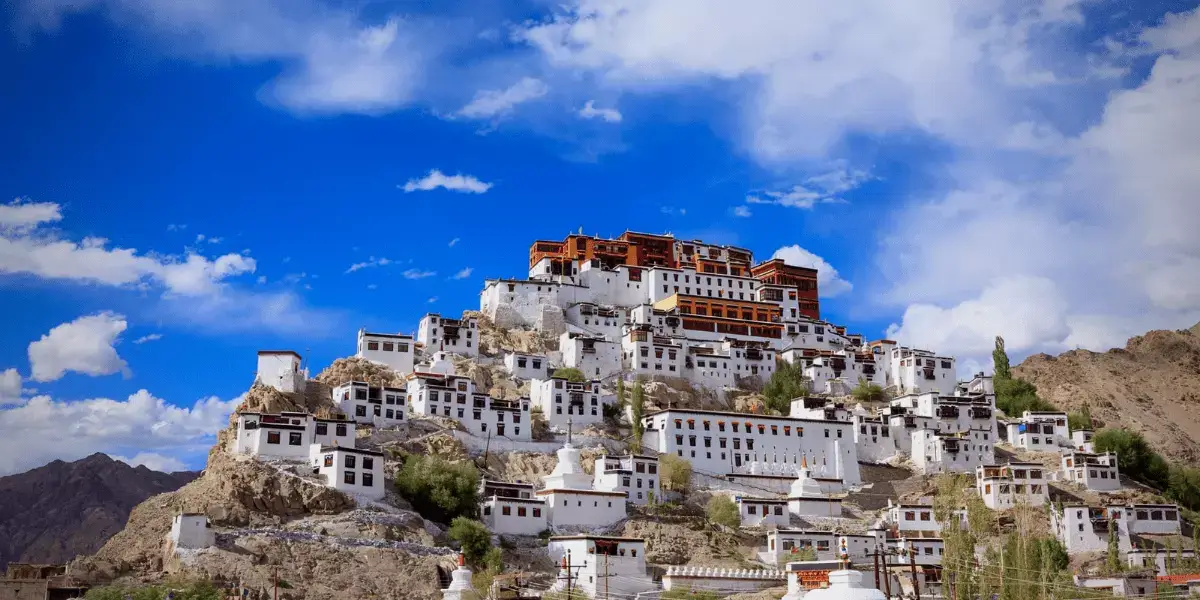
Alchi Monastery
The largest gompa built by Rinchen Zangpo, a translator of Buddhist texts from Sanskrit into Tibetan, Alchi Monastery is one of the most famous sites in the region. Tourists can pay homage to different shrines and temples, such as the main Buddha Vairocana Lhakhang, Lotsava Lhakhang, Jamyang Lhakhang (Manjusri temple), and sumtsag Lhakhang. The main statue is that of Vairocana Buddha, but there are other smaller statues representing the Buddha. A unique aspect of this monastery is that the paintings here are not thangka style. They are more in the Indian style. To build this monastery, Rinchen Zangpo is said to have brought painters, sculptors, and carvers from the Kashmir valley. Located on the outskirts of the city, the monastery was built around the year 1000. Namaskar India Tour is a local travel agency offering tours in Ladakh.
The Chadar trek
The Chadar Trek in Ladakh can only be done during the winter months in Ladakh. It gets its name from the fact that during winter, the rivers freeze and turn into a blanket of ice which is the main terrain of this trek. Throughout the adventure, trekkers walk on precarious ice formations, stay in caves filled with stalactites and stalagmites and encounter other snowy landscapes. It is very important to have an experienced guide leading the trek. It is not suitable for children and most adults as it is a difficult trek. Only those who feel they are physically fit should undertake this trip. It covers a distance of about 62 km, which takes about nine days to complete, and rises to a height of 11,000 feet. Most of the time, the trek is done on the frozen Zanskar River and it starts from the village of Chilling. February is considered the best time to do this trek as the ice is most stable at that time.
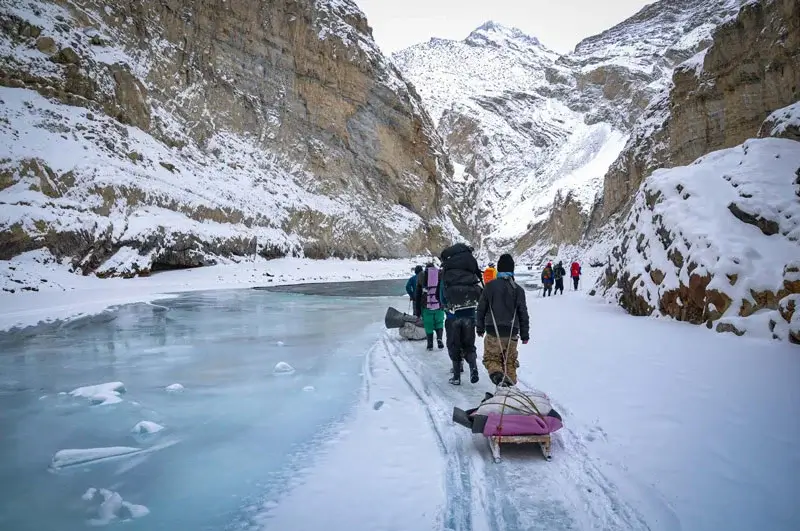
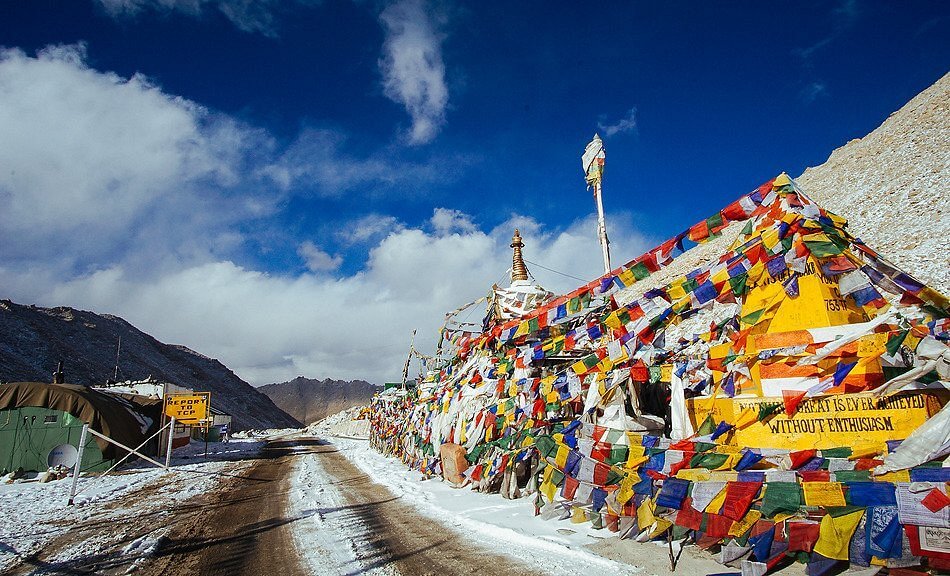
Chang La Pass
It is widely regarded as the second-highest motorized route in the world. The Chang La Pass is perched at a height of 17,590 feet above sea level. This pass is the main route to Pangong Lake, which is a scenic tourist stop. The pass is also the gateway to the Changthang Plateau, which is known to be the home of the nomadic Changpa tribe. Tourists can also visit the nearby Tangtse village. It remains inaccessible during the winter months, especially from November to April. Another unique feature of the pass is that it is also home to the world’s highest research station, founded and maintained by the Armed Forces Research and Development Organization. Chang La Pass is about 75 km from Leh.
The Changthang Wildlife Sanctuary
This sanctuary is home to a wide variety of flora and fauna that covers an area of 1,600 km2. It is located on the Ladakhi Changthang plateau in Leh district of Jammu and Kashmir. It boasts the highest lake in the world, the Tso Moriri. It is believed to also include the highest village in the world, Korzok village, which attracts tourists to visit Korzok Monastery. While observing the rare snow leopard, one can also see a kiang or a wild donkey, as well as the black-necked crane. Other interesting species are the Tibetan wolf, wild yak, bharal, brown bear, and the marmot which seems to be present everywhere. There is also a wide variety of avifauna about 44 types of water birds and seasonal species of migratory birds.
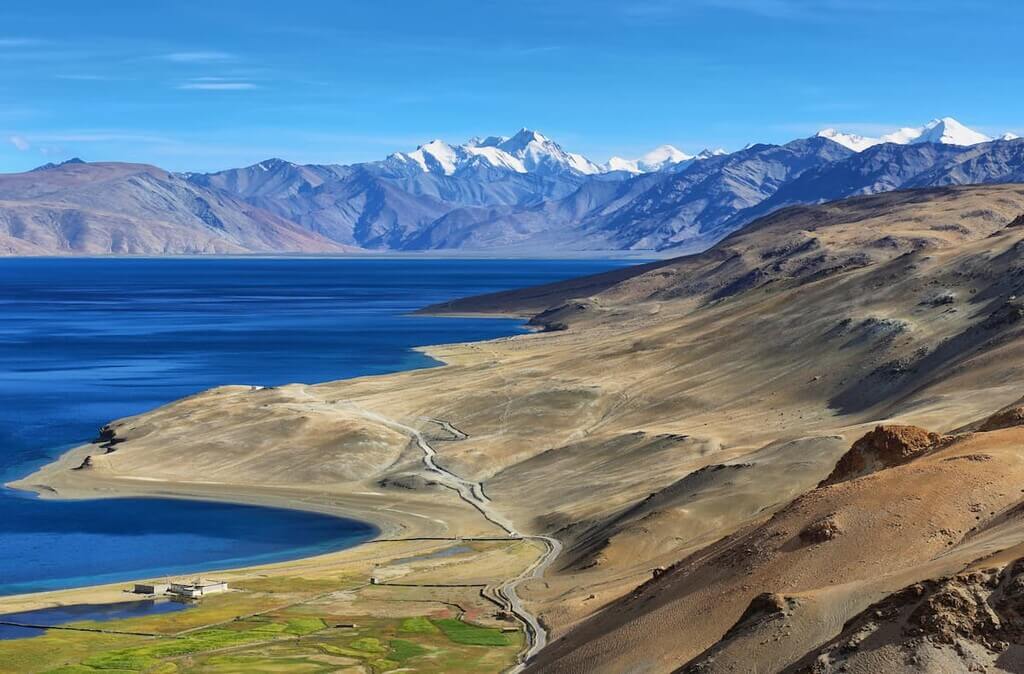
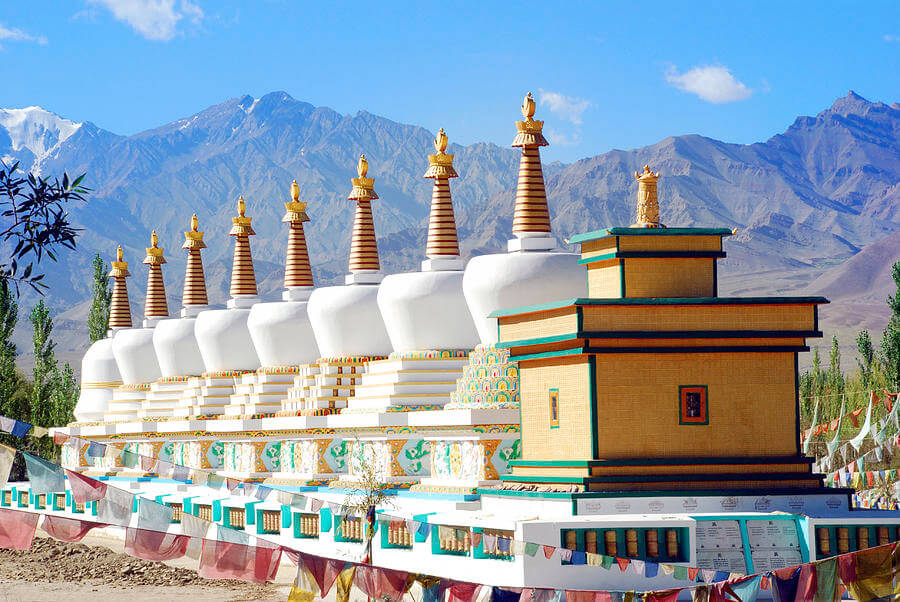
The Choglamsar
The village of Choglamsar is a Tibetan community located on the outskirts of Leh. It lies along the Indus River at about 11,000 feet above sea level and is known for its exquisite Tibetan choktse tables, as several artisans who make these handicrafts reside in the village. The village also has a handicraft center mainly devoted to carpet weaving. Many artisans leave from this village to sell their wares in the main city of the country. The village also has an impressive gompa perched on a small hill.
What makes the gompa so attractive is its distinct golden facade that shines even from a distance. In addition, the gompa also offers beautiful views of the surrounding landscape. Besides the gompa, you can also visit the Central Institute of Buddhist Studies. There is also a very popular children’s village in the village. The prayer place of His Holiness the Dalai Lama in Choglamsar, known as Jivatsal, is an oasis of peace; and the monasteries of Spituk, Sabu and Sankar are other popular attractions frequented by tourists.
The villages of Dah-Hanu
The picturesque villages of Dha (or Dah) and Hanu are among the few villages that are home to Leh’s ethnic Drogpa tribe, known for their hospitality. They are said to be the descendants of the original Aryan or Indo-European race. These villages are a great way to explore the cultural diversity of the region and are a huge draw for photographers, who love to capture portraits and landscapes. The tribes have unique styles of ornamentation and interesting headdresses that make for great photos. Dha and Hanu are located in the Brokpa region of Leh and are known as the “last Aryan villages of India”.
According to legend, when the conqueror Alexander arrived in the Indus Valley and then left for Beas, he left some of his clans and settled here. Of the many Brokpa villages, only these two are open to tourists. Buddhism is the main religion of the region, but the inhabitants also worship the animistic pantheon of gods. The villages of Dah and Hanu are about 163 km northwest of Leh and are also known for their cultivation of grapes, cherries, walnuts, and apricots.
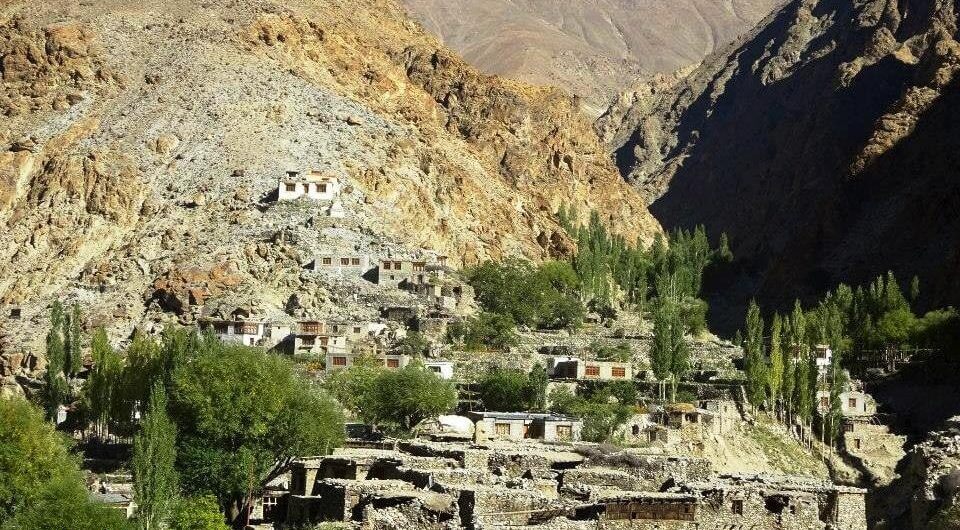
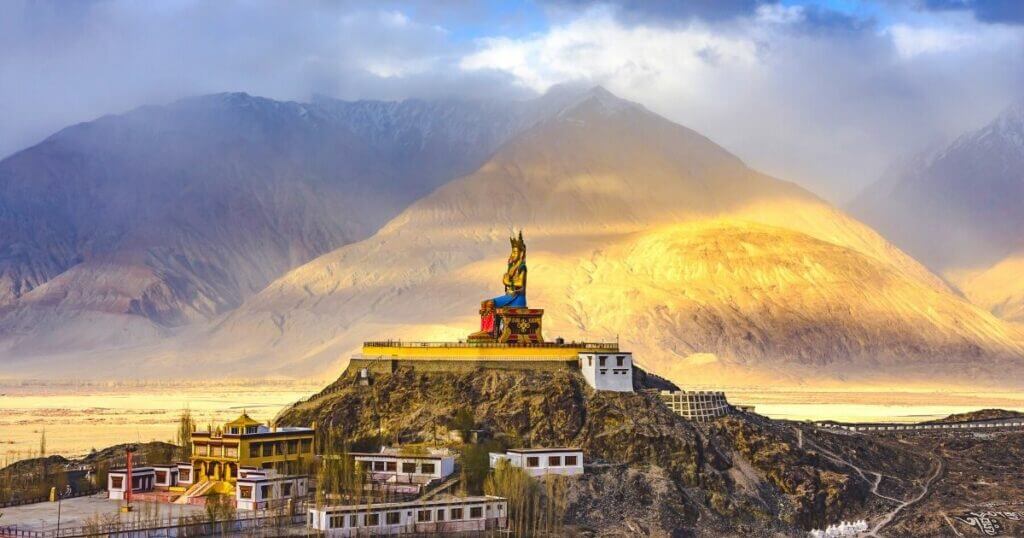
The monastery of Diskit
The village of Diskit is the administrative center of the Nubra Valley and its popularity is linked to the ancient monasteries it houses. Belonging to the 14th century, this monastery is considered the largest and oldest in the Nubra Valley. Also known as Diskit Gompa, the most important attraction of the monastery is the huge statue of Maitreya Buddha at the top, which was unveiled by H.H. the Dalai Lama. From the foot of the statue, one can have a magnificent panoramic view of the Nubra Valley. The monastery was founded by Changzen Tserab Zangpo in the 14th century and is located on a hill above the plains of the Shayok River. The monastery should also be visited for its extensive collection of murals and fresco exhibitions. Visit the monastery especially in December to attend the Dosmoche festival held there.
The Dzongkhul
The Dzongkhul Monastery, founded by Mahasiddha Naropa, an Indian Buddhist, is a place of rest and meditation. The cave in which Naropa spent time is still located on this monastery site. It is said that he struck his stick with his hand on a rock at this place, which resulted in the foundation of this monastery. Many Mahasiddhas of Zanskar like Dubchen Kunga Gyatso, Dubchen Nawang Tsering, Dzadpa Dorje, Karmapa, Kunga Choslag, and Lama Norboo have meditated here. The monastery houses important artifacts such as the image of Samvara, a crystal stupa, and religious texts containing biographies and scriptures. There is also a meditation cave, where Panchen Naropa is said to have left his footprint on a rock, as well as its sacred spring which is venerated to this day.
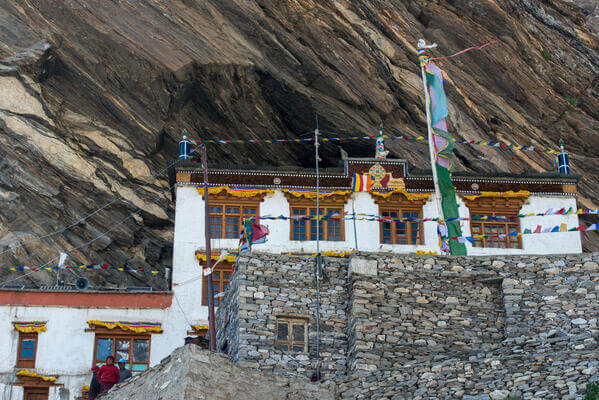
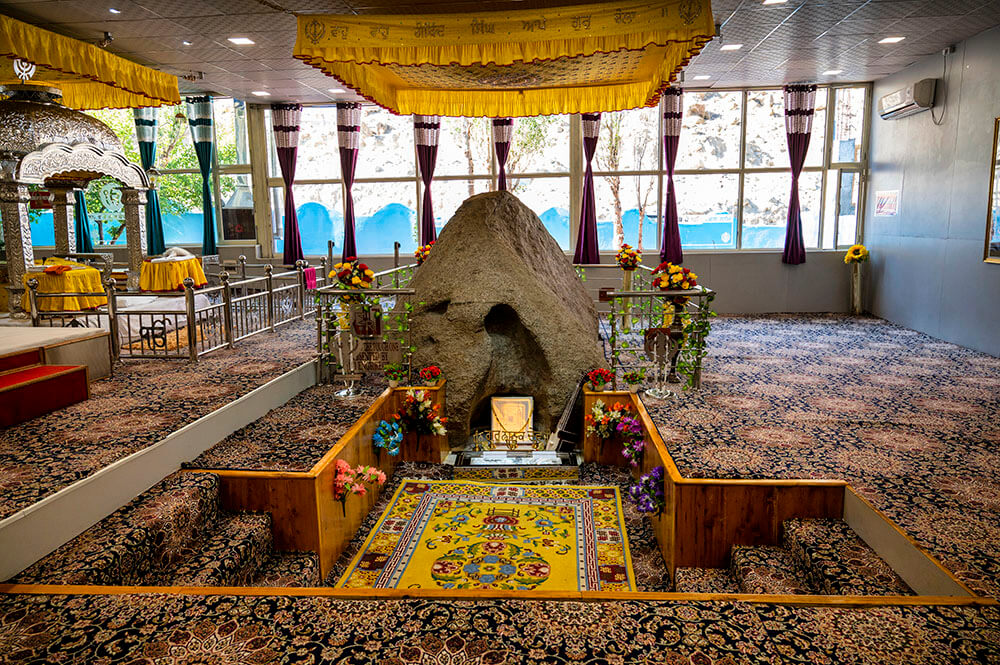
The Gurudwara Pathar Sahib
Located on the outskirts of Leh, on the Leh-Kargil road, is the Gurudwara Pathar Sahib, which was built in memory and honor of Guru Nanak. This place of worship is associated with a very important event in the history of the Sikh religion. It is popularly believed that from 1515 to 18 when Guru Nanak was returning to Punjab via Srinagar, after traveling to Sikkim, Nepal, and Tibet, he rested at this place. When he arrived in Leh, he sat here to meditate. While he was here, Guru Nanak defeated a demon who was trying to crush him with a rock.
However, the rock that the demon had rolled on softened and melted, and instead of hitting him, it took the form of Guru Nanak. In 1970, a rock was discovered that would be the one in the story, with the shape of Guru Nanak still engraved on it. The Indian army, with the help of the local people, built this gurudwara to pay homage to this event, and all cars passing by stop to say a prayer and be blessed. Every Sunday, Indian army officers volunteer for public service.
The Hall of Fame
The Hall of Fame, an important stop on the sightseeing tour, encapsulates the essence of patriotism and features exhibits recounting the bravery of Indian soldiers and their courageous accomplishments. Passing through the OP Vijay Gallery, which displays the weapons used during the Kargil War, and seeing the elaborate display of war documents, uniforms that were worn at the Siachen Glacier, and others, you will be filled with a sense of pride. Letters written by the soldiers to their families, photos taken during the wars fought in the region and a 30-minute documentary about the Kargil war, are some of the highlights. On the second floor, weapons and equipment held by the Indian army during its clashes with the Pakistani army have been displayed. The museum also houses a souvenir store. The hall was built inside a museum that was erected by the Indian Army in honor of the soldiers who lost their lives during the various wars that were fought in this region.
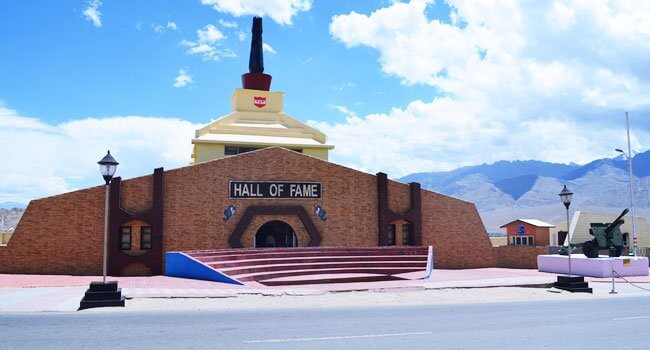
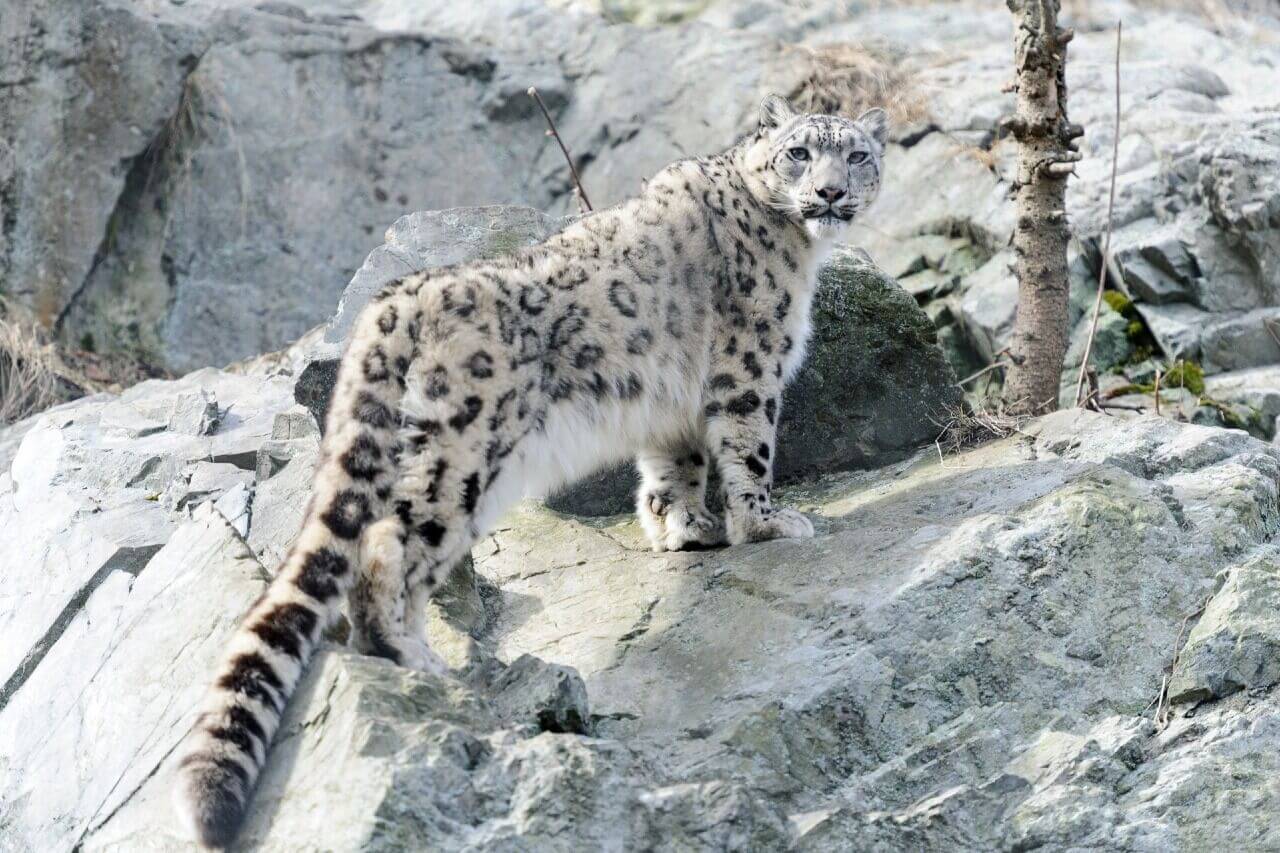
The Hemis Wildlife Sanctuary
The Hemis Wildlife Sanctuary, named after the Hemis Monastery, covers an area of 600 sq km. Comprising the watersheds of Markha, Rumbak, and Sumdah nalas, it is located on the western bank of the Indus River. The terrain of the Hemis Sanctuary, dotted with boulders and rocks, is characterized by rugged valleys that have large expanses of grassland and several dense areas of shrubs and trees. The sanctuary has been identified as a snow leopard reserve and is also known for animals usually found at such altitudes, such as the very rare shapu, bharal, wolf, Pallas cat, ibex, Tibetan argali, and Ladakh urial. Since the bharal and urial are found in large numbers here, it is easy to spot them. More than 30 species of birdlife have been observed here, the most common of which are the Himalayan snow cock and the chukar partridge.
The homestay experience
One of the best ways to experience the traditional culture and lifestyle of the Ladakhi people is to stay in a homestay. Leh City and its surrounding areas are full of these accommodations run by local families that offer a great experience on a budget. Typically, room and board are included, along with recommendations on things to do and farming opportunities. Hosts spoil guests with plenty of butter tea, thukpa, and skyu. Staying with locals also means hearing Ladakhi stories and songs. Some of these homestays are also offered on larger trekking routes. Traditional Buddhist thangka paintings and wooden choktse tables, as well as other home furnishings unique to the region, are available in these homes.
Tukchu Homestay, near Leh’s Shanti Stupa, is run by Tashi Gyaltsen’s family and is considered one of the most famous Ladakh homestays in the Leh area.
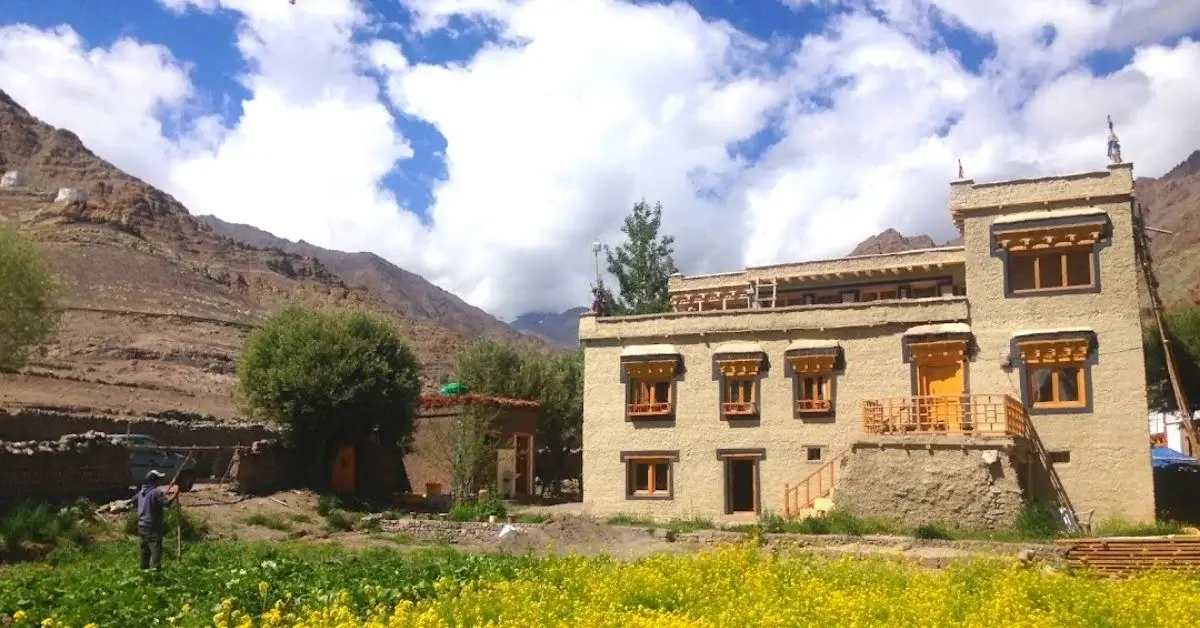
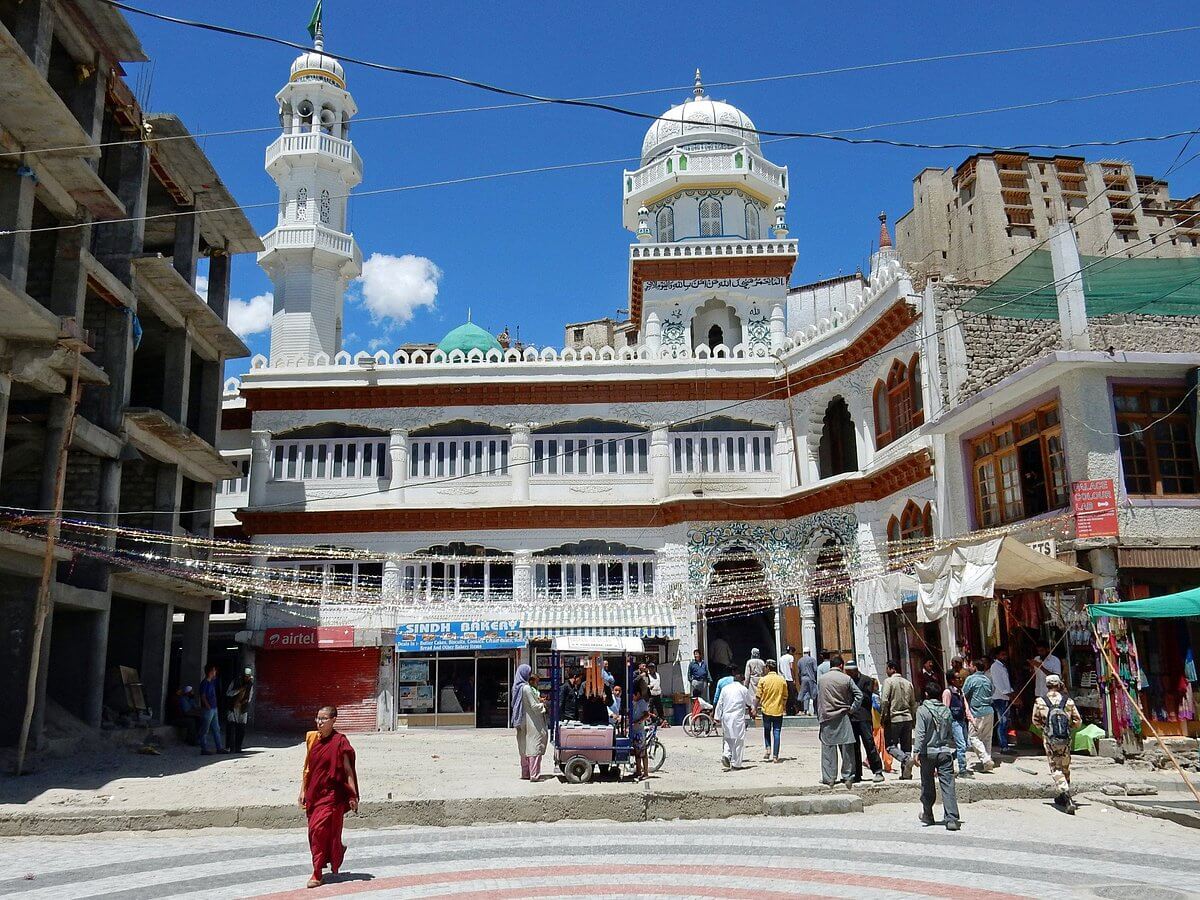
The Jama Masjid Mosque
The Jama Masjid is located in the heart of the Leh bazaar and is considered the largest mosque in the Ladakh region. Situated in the middle of a bustling market, this tranquil white structure with a beautifully designed doorway draws crowds from all over the region. It is a stunning double-domed structure with intricate modern carvings and quotes from the Holy Quran painted on the entrance. The mosque houses a memorial – Shahi Hamdan – which is dedicated to Mir Syed Ali Hamdani, a Sufi saint. The mosque currently allows only men to enter. Built-in 1666-67, the mosque was a symbol of Mughal friendship with the Ladakhi rulers. The original structure of the mosque was renovated a few years ago. It is easily accessible on foot.
Ladakh
The breathtaking beauty of Ladakh makes it perhaps one of the most impressive places in India. Extreme weather conditions, blue waters, rugged landscapes, and magnificent views attract tourists from all over the world to this region. Although the climate can be harsh for most of the year, the warmth of the people more than makes up for it. Ladakh is the largest of the provinces of Jammu and Kashmir. It is bordered by the Karakoram mountain range to the north and the Himalayas to the south. With the great Indus River running through Ladakh, the province is divided into Leh, the capital, Kargil, Nubra, Zanskar, lower Ladakh, and Rupshu.
A multitude of stupas and monasteries dot the landscape and allow for peaceful stops. With intricate carvings, a mix of colors, a serene atmosphere and exquisite relics, these centers of Buddhism will leave you in awe. Don't miss to visit the famous high altitude lakes of Ladakh as well. Sit on the shore and enjoy the cloudy and windy weather while gazing at the beautiful mountains before you. The whole scene is a mix of blue, white, and brown. The culture and food of the region is equally fascinating. Visit Ladakh for its majestic cliffs, snow-covered winter wonders, vast deserts, and the tranquility that comes with it. There are many adventurous activities you can enjoy while in Ladakh, such as rock climbing, Bactrian camel rides, motorcycle expeditions, white water rafting, camping in the middle of the grasslands, and many more. The old town of Leh, Thiksey Monastery, Yungdrung Gompa are other attractions you can visit during your stay.
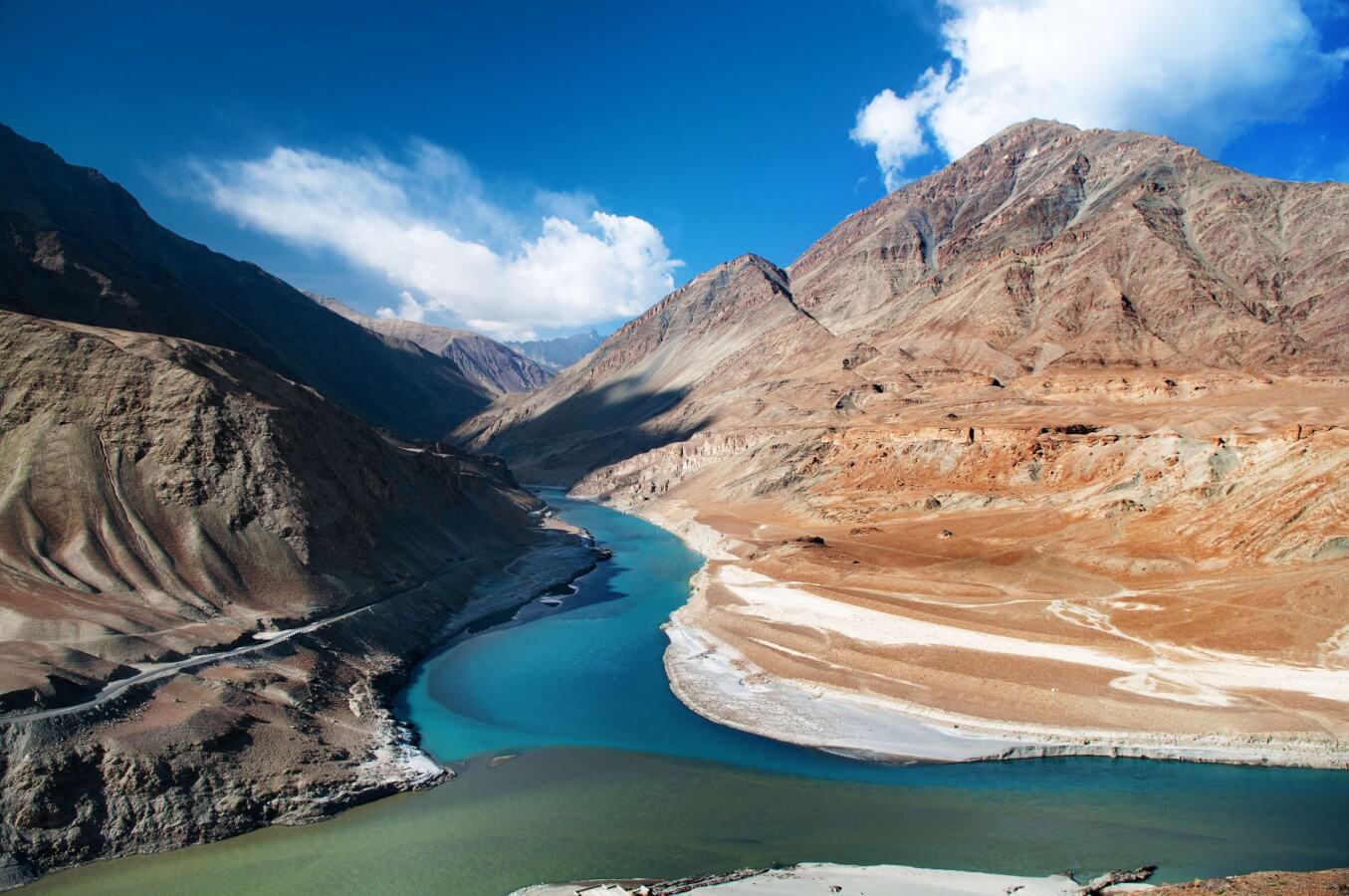
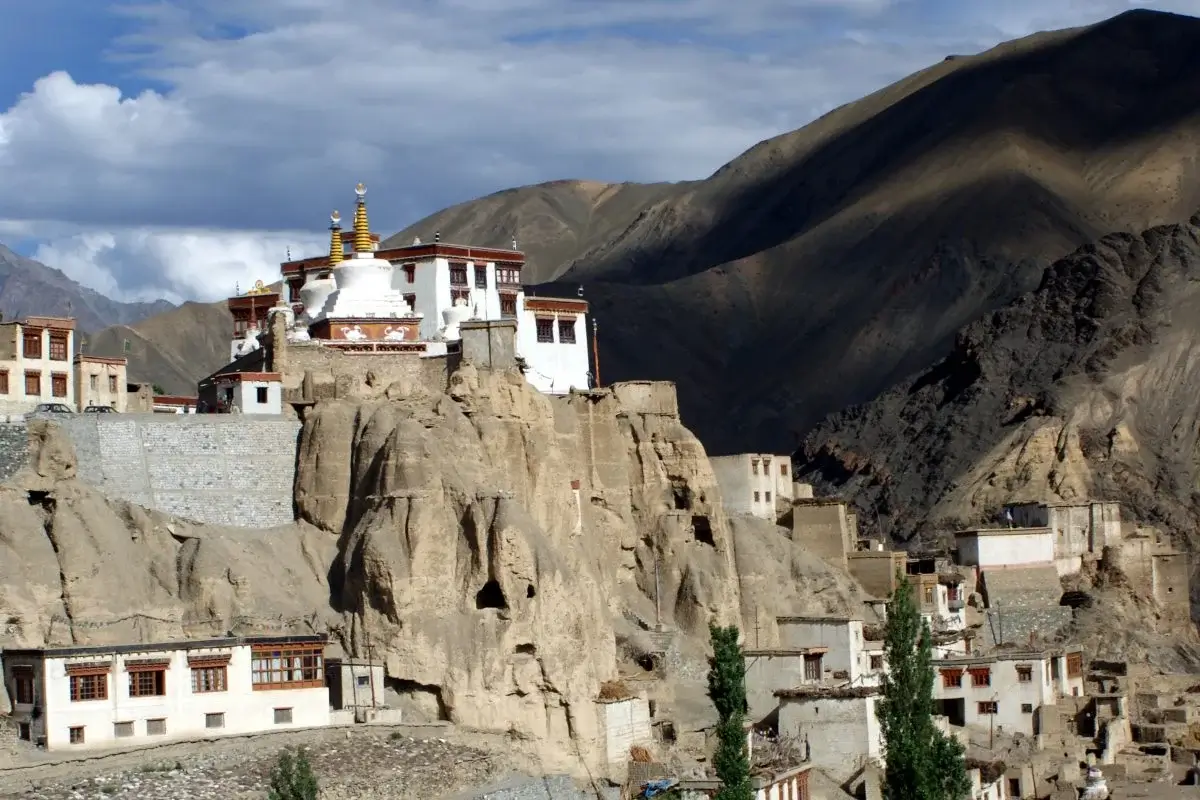
Lamayuru Monastery
It is located about 127 km west of Leh. In the 11th century, this is the place where Mahasiddha Naropa, an Indian Buddhist, is said to have come to live. The cave in which he stayed still exists today. The Kadampa school has flourished here thanks to the teachings of Rinchen Zangpo. Every year, on the 17th and 18th days of the fifth month of the Tibetan calendar, the monastic festival of Yuru Kabgyad is celebrated with great fervor. Masked dances are performed during these days. During these auspicious days, all the shrines and thangkas of the monastery are displayed for the devotees to see and worship. This monastery is located on the Srinagar-Leh road and is often referred to as Yuru Monastery. The Lamayuru area is also the starting point for many treks.
The Leh Palace
Also called Lhachen Palkhar, Leh Palace was built by King Sengge Namgyal in the 1500s and completed in the 17th century. Its facade resembles that of the Potala Palace in Lhasa, the capital of Tibet. The roof of the Leh Palace offers a breathtaking view of the Ladakh region and the Stok Kangri. With its huge walls and wooden balconies, it is an excellent example of medieval Tibetan architecture and has nine floors. The entrance to the palace is decorated with carved wooden figures.
The upper floors were used as the royal residence while the lower floors were used as stores and stables. Interesting features of the palace include the Namgyal Stupa, the Chandazik Gompa filled with wall paintings, and the Chamba Lhakhang Temple which bears fragments of medieval wall paintings. The museum located in the palace houses artifacts that are over 450 years old. The Archaeological Survey of India is currently working to preserve the heritage of the Leh Palace.
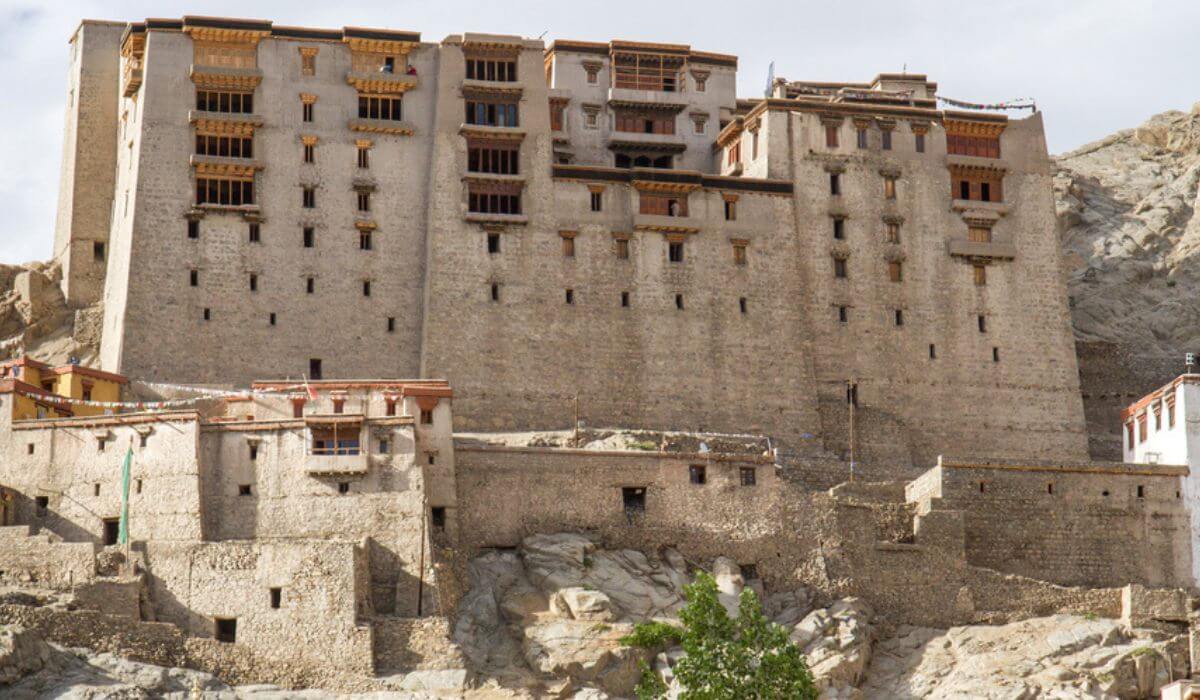
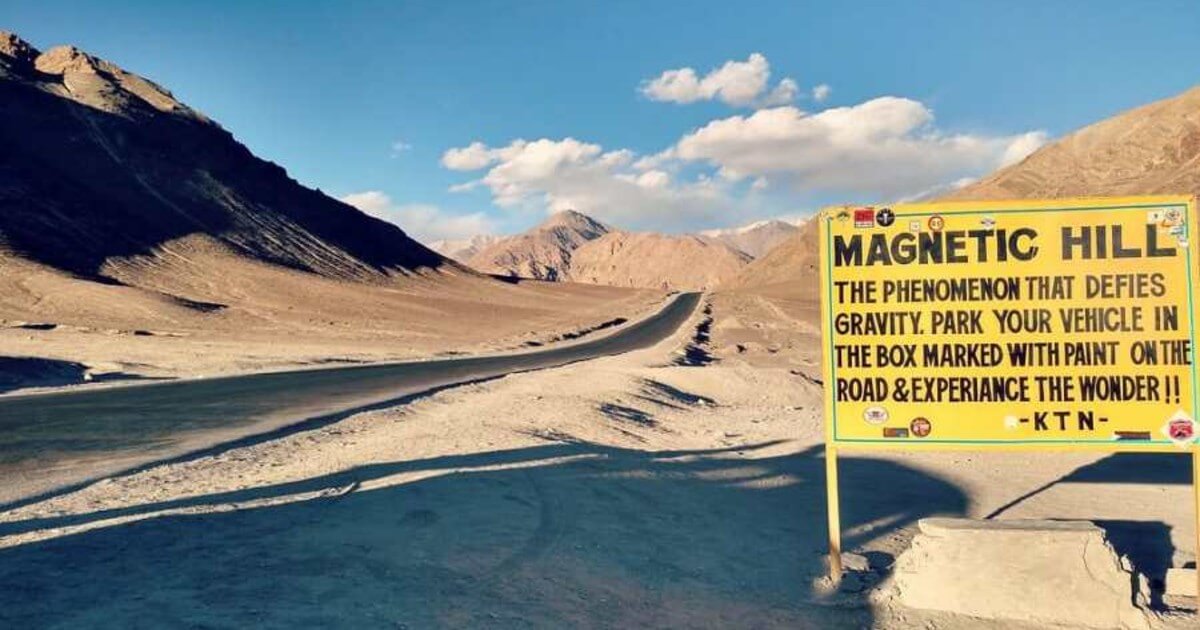
The Magnetic Hill in Ladakh
Perched at an altitude of 14,000 feet, Magnetic Hill in Ladakh is one of the most intriguing places in the country. This tiny hill is said to defy gravity as it tends to pull vehicles upwards. It is very exciting to defy the laws of science and be pulled in the opposite direction. Scientific theory states that there is a powerful magnetic force emanating from the hills that defies gravity at this particular location. It is a good stop on the highway and serves as a break between ordinary trips. Note that it is best to visit between May and September when the road is easily accessible. A sign indicates the location of the magnetic hill, so it is impossible to miss it while driving down the highway. Local Ladakhi superstition believes that the road is a straight staircase to heaven.
Maitreya Buddha
The Maitreya Buddha statue is one of the most important attractions in the Ladakh region. Perched atop a monastery, it is the statue of Jampa Buddha, known for its intricate carvings, brilliant craftsmanship, and bright colors. The room beneath the statue houses a wide variety of Buddhist literature and a collection of statues, including those of Shakyamuni Buddha and Guru Rimpoche. The Jampa Buddha statue was erected in 2006 to promote peace and protection in the area. However, it was officially inaugurated by H.H. the Dalai Lama in 2010. The statue faces the Shyok River and is about 32 meters high. The natives of the valley helped in its construction and the gold used in the statue was donated by the heads of other large monasteries in the area. The best time to visit is in the summer, between June and September. One can easily take a bus from Leh to this area.
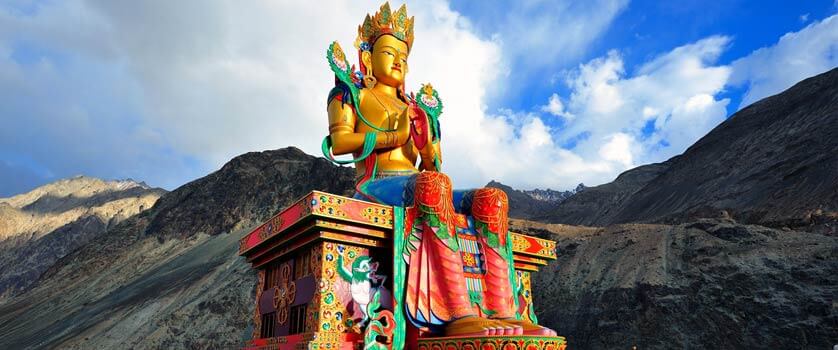
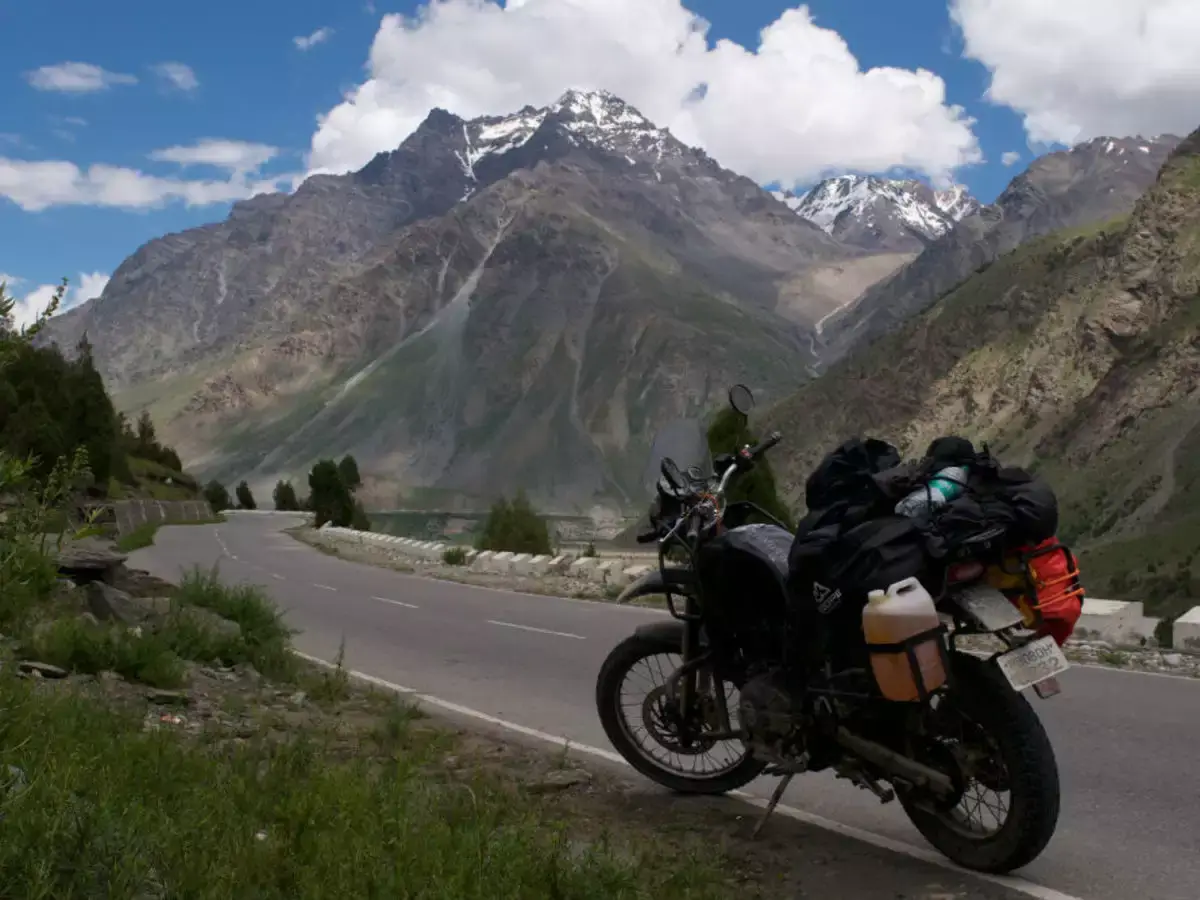
Mountain Biking in Ladakh
There are several mountain biking trails throughout Leh-Ladakh. Adventure seekers can cycle on the Khardung La, which is considered one of the highest motorable roads in the world, along the banks of Pangong Lake, through the Warila Pass, into the Nubra Valley, and along the banks of the Indus and Zanskar rivers. Several travel agencies organize one-day and multi-day bicycle tours for individuals and groups. Along the way, cyclists experience the local cultures, homestays, and food of the Ladakh region. The cyclist should ensure that he/she is in the good physical condition and acclimatized before embarking on this adventure. Mountain biking is a great way to discover the Leh-Ladakh region for those who love to cycle and are ready for adventure in the mountains. Some companies may require visitors to prove that they are fit for the adventure through short exercises or medical certificates. Tours vary in difficulty level.
Mountain Climbing
As the Leh-Ladakh region is blessed with the towering Himalayan and Karakoram ranges, it offers climbers many options. The most popular mountains for this activity are Stok Kangri, Kang Yatse, Mentok Kangri, Chamsher, and Lingser Kangri. They are generally easy to climb. However, climbers must have excellent trekking skills. They should also make sure that they are fully acclimatized to the weather conditions to avoid breathlessness or acute mountain sickness.
The Leh and Ladakh region is one of the few places in the world where climbers can reach heights of 6,000 meters in a week or more. These expeditions take climbers through surreal terrain where they can encounter wildlife like blue sheep and wild birds. Along the way, one can also discover pristine lakes and the unique culture of the nomadic Changpa people.
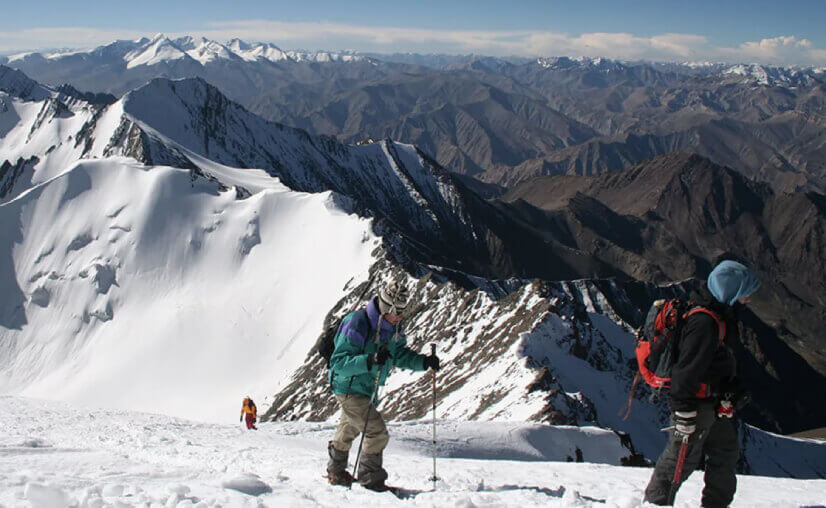
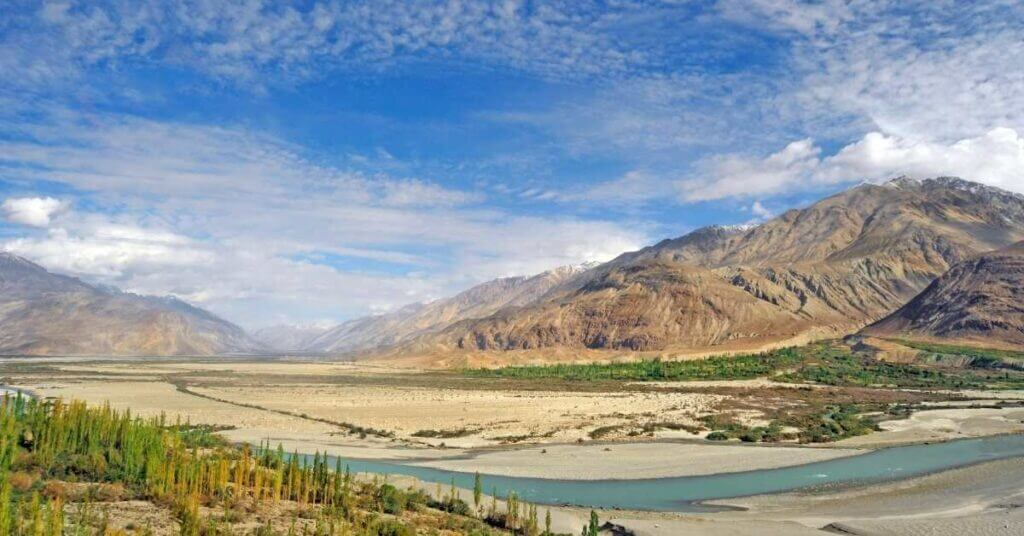
The Nyoma
Nyoma village is a cold and temperate village located in the Leh district of Jammu and Kashmir. It is located on the bank of the Indus River and experiences heavy rains during the monsoons. At 147 km from Leh, it is difficult to reach the village, but it is absolutely worth it. The best way to visit Nyoma is to take a day trip to Chumathang from Leh. The village is the perfect place to walk around and have a drink in the beautiful sites that Leh has to offer. You can go for nice long walks and meet friendly locals. There is also a small Buddhist monastery that you can visit. Small but richly decorated, it is extremely soothing to the eyes. The village of Nyoma is equally beautiful, whether in the rain with colors melting everywhere or when it is windy and the terrain is difficult to climb.
The lake of Pangong Tso
A mosaic of myriad shades of blue, Pangong Lake in Ladakh is perched at a height of 14,270 feet above sea level and is considered one of the highest brackish water lakes in the world. It lies almost on the Indo-Chinese border, with one part of the lake in India and the other in China. The beauty of the lake is such that it was used as a backdrop for the popular movie 3 Idiots. In fact, there is a 3 Idiots point in the area, where the famous yellow scooter from the film’s climax is parked. The lake is about 5 km wide at its widest point and about 134 km long. There are also various camps that surround the shores of the lake, offering accommodations ranging from budget to luxury. It is located about 220 km from Leh.
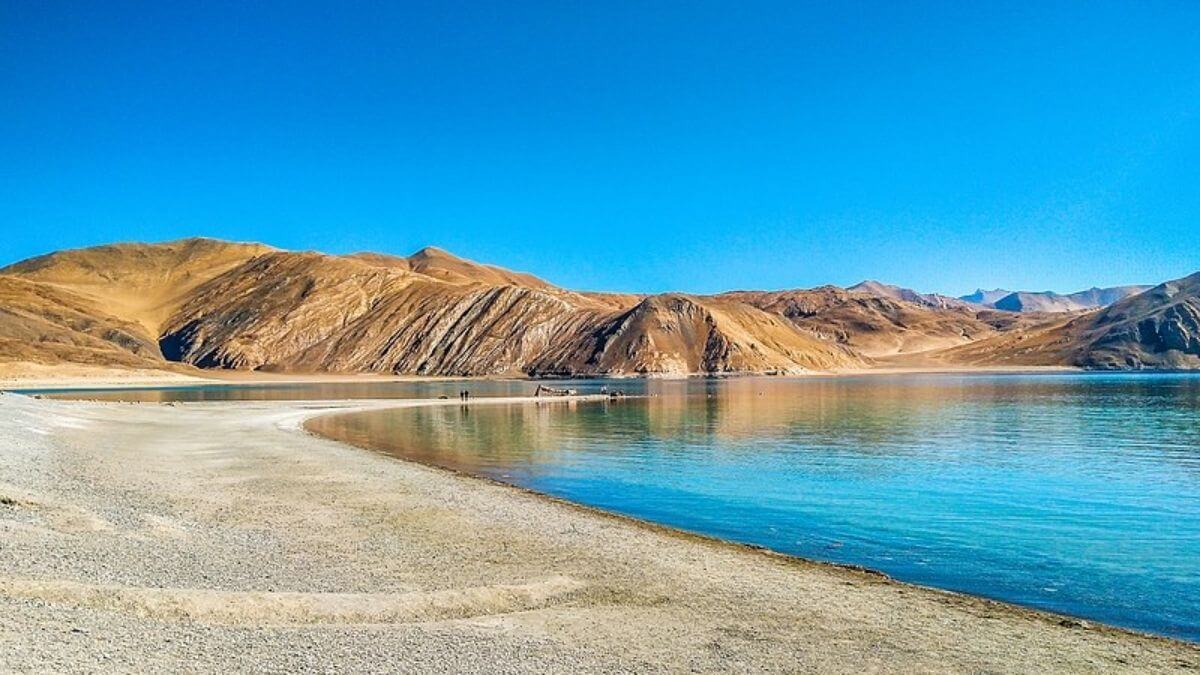
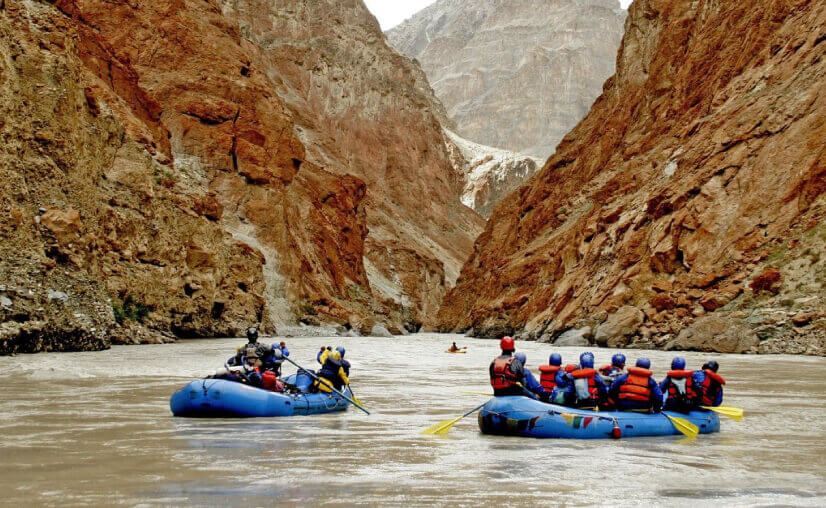
River rafting in Ladakh
Thrill-seekers will find amazing rafting opportunities in Ladakh’s Indus and Zanskar thanks to the presence of two major rivers. The Zanskar River has one of the best navigable gorges in the world. Rafters going down the river find plenty of rapids and witness spectacular geological formations all around.
One can also enjoy the hospitality of the Zanskari people. There are several tours that can cover a rafting distance of 5 to almost 30 km. Even shorter rafting tours can be arranged for a few hours. Some of the places on these rafting routes are Tsogsti, Nimoo, Scorpoche, and Chilling. This adventure activity is best done in groups. The shorter routes are easy and perfect for families with children, while the longer ones are suitable for adults who have some experience in this type of sport.
The Shanti Stupa
Set amidst steep and rugged mountains, the pristine white building of the Shanti Stupa is a magnificent work of art. Beautiful Buddhist murals and golden artwork interspersed with a stunning facade make this stupa an attractive tourist stop. To soak up the peace and serenity of the surroundings, visitors can walk around the stupa while chanting mantras, which are said to envelop tranquility. Tourists can head to the balcony of the stupa tower and get impressive views of the surrounding landscape. It is widely believed that the stupa was built to mark the completion of 2,500 years of Buddhist religion by Japanese monks between 1983 and 1991. The purpose of its construction was to promote the idea of world peace. It takes 15 minutes to walk from Changspa to reach the stupa.
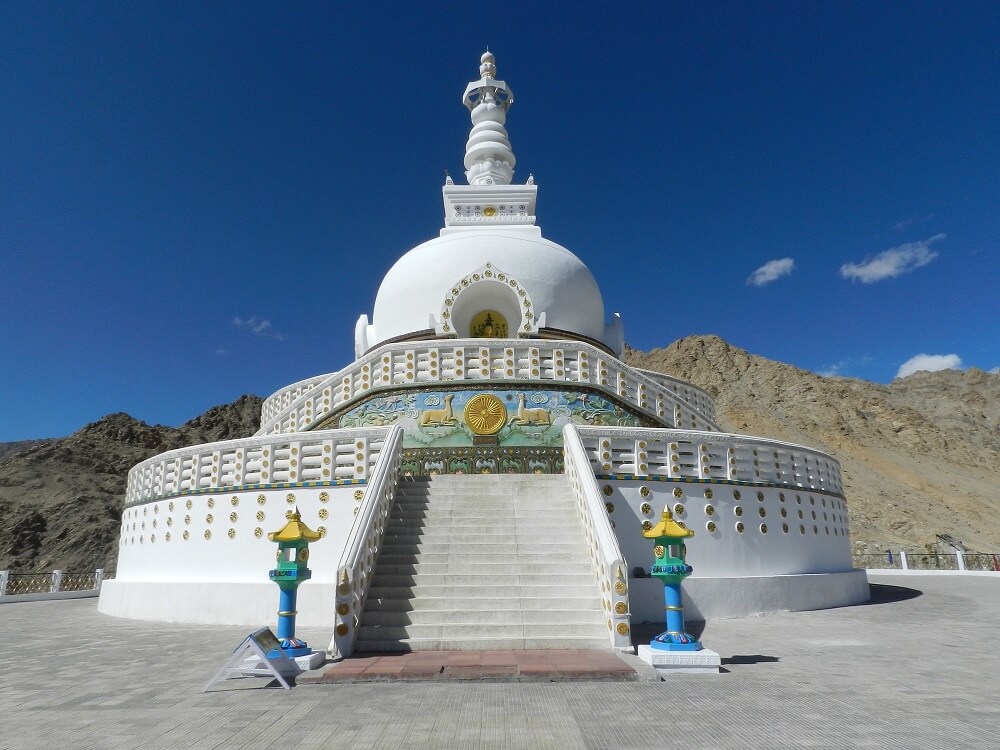
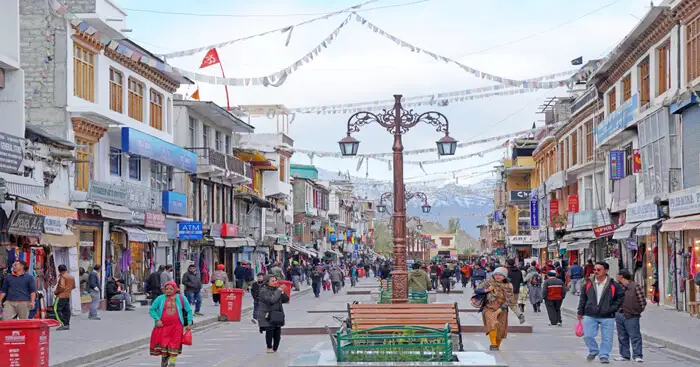
Shopping in Ladakh
The main bazaar in Leh is a great place to buy souvenirs, woolen clothes, pashmina shawls, and other products. Other local specialties include Buddhist thangka paintings that are made on silk, Tibetan choktse tables, prayer wheels, and Buddhist masks. Turquoise Jewelry and other exquisite trinkets are also sold on the main bazaar road. The Tibetan Handicraft Emporium is a very good place to buy handicrafts.
The Buddhist Thangka House offers a variety of colorful thangka paintings. Thangka paintings not only have aesthetic value but are also immensely useful for meditation purposes. Monks even used them as teaching materials in the past! The Tibetan market features stalls of Tibetans selling everything from jewelry and clothing to bags and wallets. Don’t forget to stock up on apricots in Leh. Local cheese, apricot oil, and jam can also be purchased at Bazaar Road and Shar Market. Leh’s Gol market is also worth a visit. Hand-woven carpets and rugs are also very popular in these markets.
The Stok Palace
It is located on the banks of the Indus, on the outskirts of the city. The Stok Palace is a magnificent three-story structure. It is still the summer residence of the royal family of Ladakh, and some 12 of its 80 rooms are still functional to this day. The royal palace museum is a must-visit as it displays items such as imperial thangka paintings, the king’s crown, robes, coins, Perak jewelry adorned with turquoise and lapis lazuli and the queen’s ancient yub-jur (turquoise inlaid headdress), and many religious objects.
There is also a 16th-century Afghan sword that is folded into a knot. The palace houses a café that offers a pleasant view of the landscape. Near the palace is the monastery which was founded by Lama Lhawang Lotus. Every year on the 9th and 10th day of the first month of the Tibetan calendar, ritual masked dances are performed here. The palace was built in 1820 by King Tsepal Namgyal, the ruler of Ladakh, whose palace was eventually invaded by Dogra’s troops. When Leh Palace was invaded, the king and his family moved to Stok Palace.
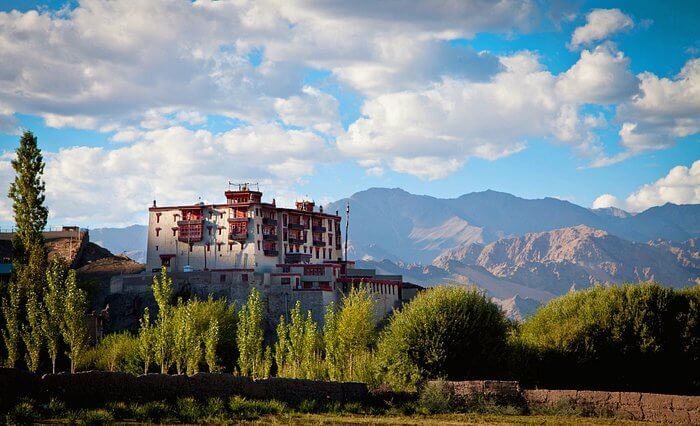
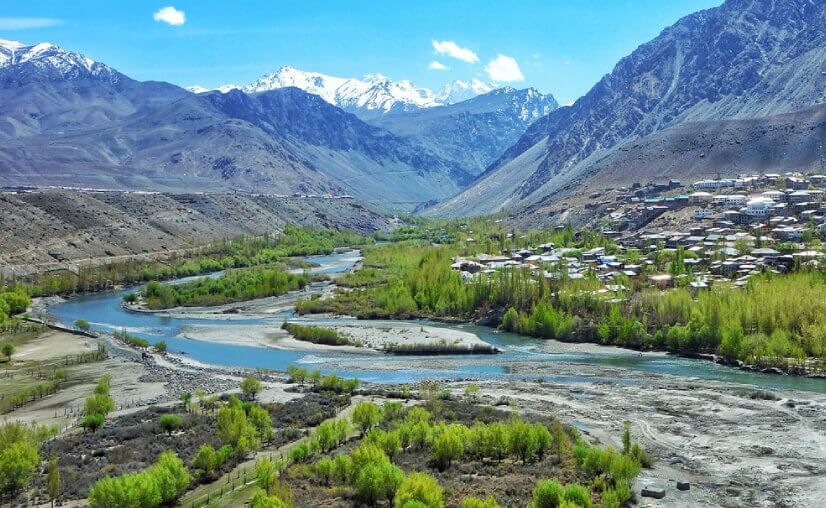
The Suru Valley
Surrounded by snow-capped mountains, pristine rivers, and lush green valleys, the picturesque Suru Valley is a must-visit during your trip to Ladakh. Located in the Kargil district, it has a blend of Turkish and Tibetan architecture reflected in the few picturesque houses here. A popular attraction is Kartse Khar, where a 7th-century statue of Buddha stands at a height of about 1.80 meters. Tourists can also visit Rangdum, which houses a monastery and two hamlets. Panikhar is a popular base for those who want to go on mountain tours. Zangla Monastery is also located nearby and is a must-visit. The hills of Suru Valley are cultivated more than any other region of Ladakh and for adventure seekers, the Nun Kun peak presents geographical variations of glacial structures, alpine slopes, and majestic peaks.
The Ladakh Festival
The Ladakh Festival, held annually in September throughout Ladakh, is a magnificent showcase of the region’s tribes, cultures, performing arts, and food. The festival lasts about two weeks and begins with a spectacular parade in Leh, with masked dances, folk songs, and performances by all the tribes of Ladakh. The colorful clothing is distinguished by the fact that Turks, Drokpas, Dah Hanu people, and many others wear their traditional finery and march in the parade. It is really exciting to see the flowery headdresses, silver and turquoise jewelry, and multi-colored dresses of the visitors as the crowd surges through Leh. The many monasteries and villages also join in the celebration with cultural events ranging from dance and theater to singing and parades. This annual festival is presented by the state government and is an important time of festivities. For those who wish to experience the diverse cultures of Ladakh in one place, there is no better opportunity than the Ladakh Festival.
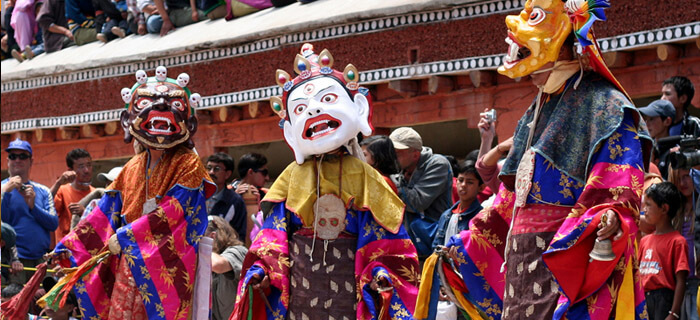
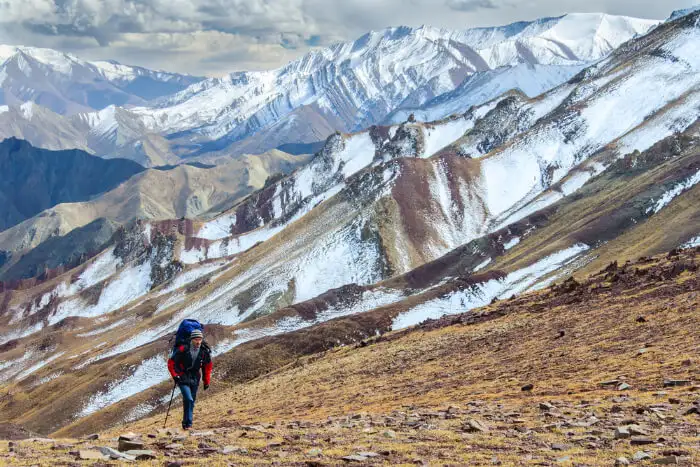
Trekking in Ladakh
The various terrains of Leh-Ladakh include mountains, valleys, and rivers, which makes it a real paradise for trekking tour enthusiasts in Ladakh. It is important to acclimatize to the climate of the region before embarking on a trek, be it short or long. These treks pass through remote villages and pristine sites, offering a glimpse into the local life of the villagers.
Some of these treks can last a few hours or a few days. Some of the most popular routes include Lamayuru to Alchi trek, Ripchar valley trek, Padum to Darcha trek, Lamayuru to Stok Kangri trek, Markha valley trek, Jhulum Hemis trek, and the famous Chadar trek. The Chadar trek can only be done during the winter months in Ladakh. It gets its name from the fact that during the winter, the rivers freeze and form a blanket of ice which forms the main terrain of this trek. Throughout the adventure, trekkers walk on precarious ice formations, stay in caves filled with stalactites and stalagmites and encounter other snowy landscapes.
Trekking in the Markha Valley
The best season to embark on the Markha Valley trek is from June to September. This is a trek of about 3,700 m above sea level, which takes about eight days. Along the route, there are fascinating views and experiences to be had. The trek along the Markha River will take you to the village of Nimaling, where you can see the high peak of Kangyatse. Other peaks that can be seen along the route include Saser Kangri, Stok Kangri, and Nun Kun. The most enjoyable part of this trekking route has to be the passage through Hemis National Park. This place is unlike any other park and is famous for species like snow leopards, ibex, and blue sheep. Wildlife lovers should not miss this trek. It is important to acclimatize well before embarking on this adventure. It is best to complete the trek in a group with a professional guide.
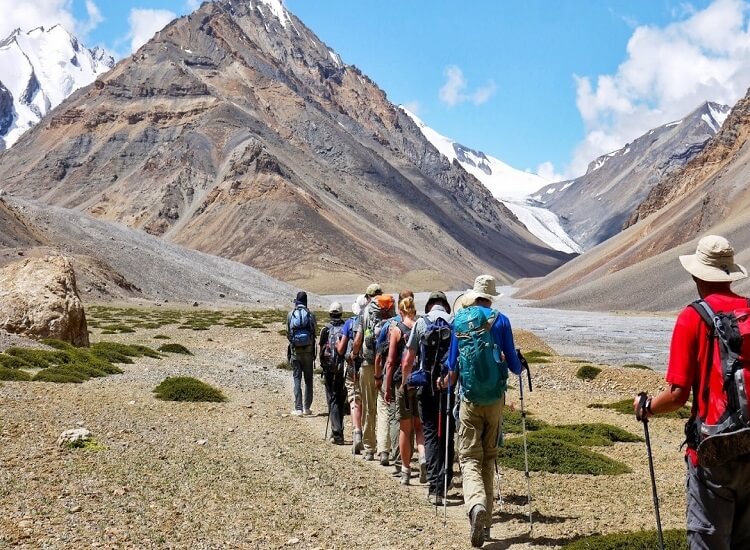
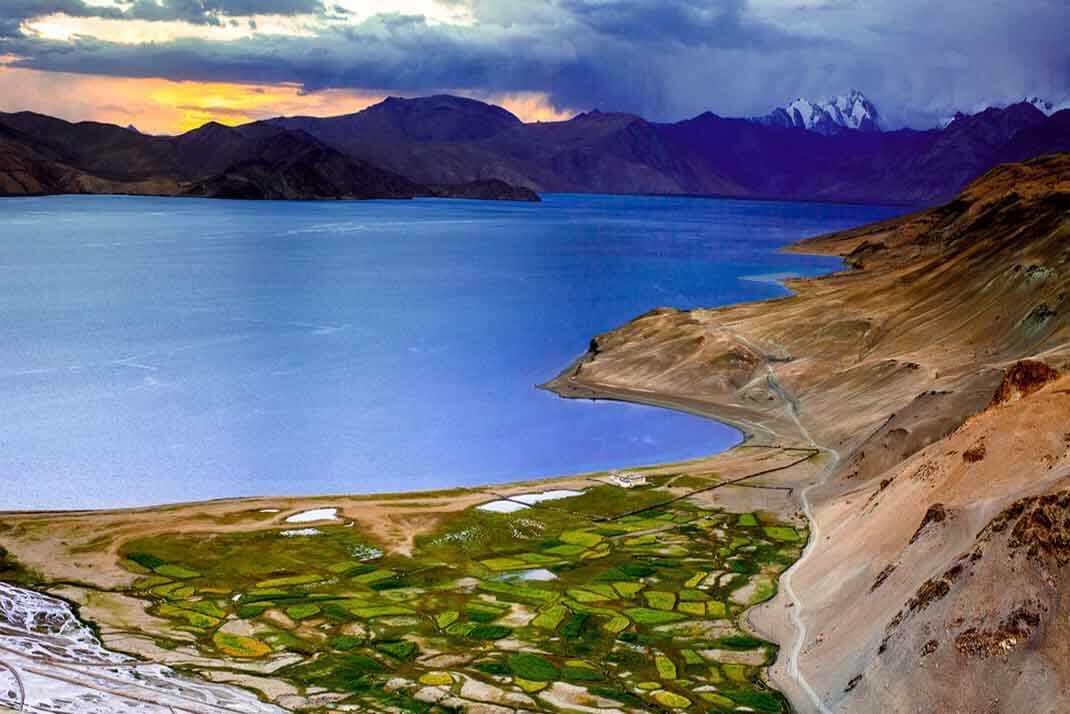
Tso Kar Lake in Ladakh
It is located about 50 km from Tso Moriri, the smallest of the three high-altitude lakes in Ladakh, the remote Tso Kar Lake. Located at an elevation of 15,280 feet, it is bordered by high mountains that are home to the elusive snow leopard. Also called the White Lake because of the white salt content of the water deposits on its shores, it leaves visitors in awe of its beauty. The area surrounding the lake is rich in flora and fauna, and is also an important point for birdwatchers, especially during the migration season when several species come to lay their eggs, including black-necked cranes. The nomadic villages of Thugje and Gursan are the guardians of the lake and its surroundings. The best time to visit this lake is between May and August.
The lake of Tso Moriri
The beautiful Tso Moriri Lake, a sapphire in the middle of a stark landscape, is one of the most beautiful sites in the Ladakh region. Nestled in the Changthang Valley, this 28 km long pristine body of water is also called a “mountain lake” because it is surrounded by several high peaks. At any time of the day, you can see several species of feathered friends flitting about and the lake has now been named a wetland reserve. You can see bare-headed geese, crested grebes, Brahmin ducks, and brown-headed gulls. Tourists can also see some varieties of wildlife such as bharal or blue sheep, marmots, Tibetan sheep, red fox, and kiang or Tibetan donkey. The lake is also home to a large population of Himalayan hares. Tso Moriri Lake is a popular stop for those who go on mountain bike adventures. The Ladakhis consider it a sacred lake.
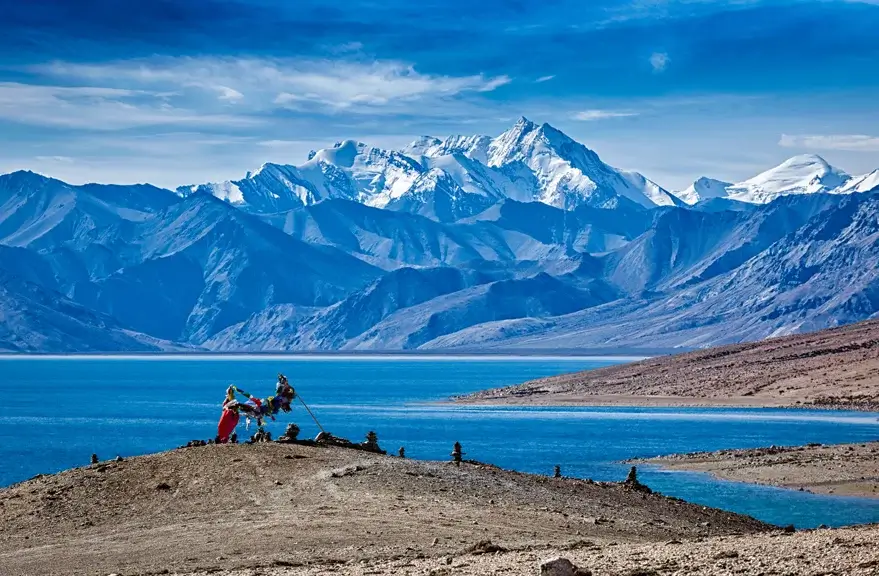
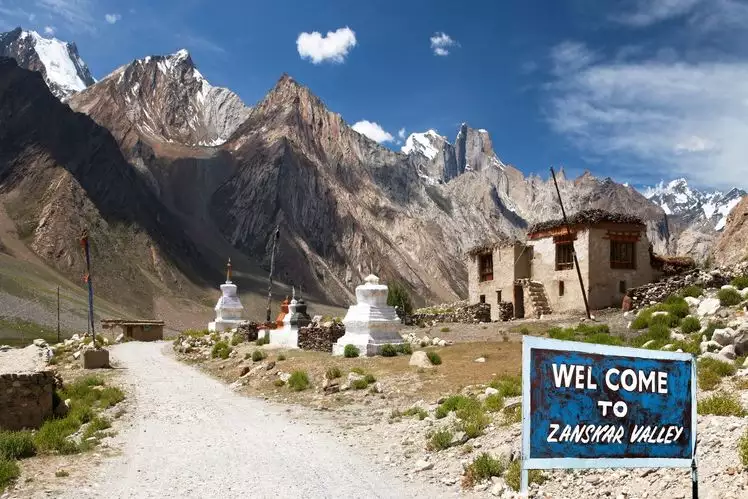
The Zanskar Valley
The Zanskar Valley is a semi-arid region located on the northern flank of the Great Himalayas. What attracts tourists to this region are the beautiful snow-capped mountains, the pleasant climate, the sparkling water bodies of Zanskar, and a lush landscape. The valley is 105 km from Leh and is a mecca for adventure sports such as trekking, paragliding, rafting, and many others. You can also do popular treks here like Lamayuru to Darcha, Lamayuru, Padum. One can even camp at the picturesque Penzila Pass which separates Zanskar from Suru Valley. In winter the temperature can drop to -30 degrees Celsius. One can only go to Zanskar between the months of June and September, otherwise, all the roads in the valley are heavily snowed in, which blocks access.
WANT TO RENT A CAR IN INDIA ?
Choose Your Traveling Theme

 TOUR BOOKING
TOUR BOOKING


